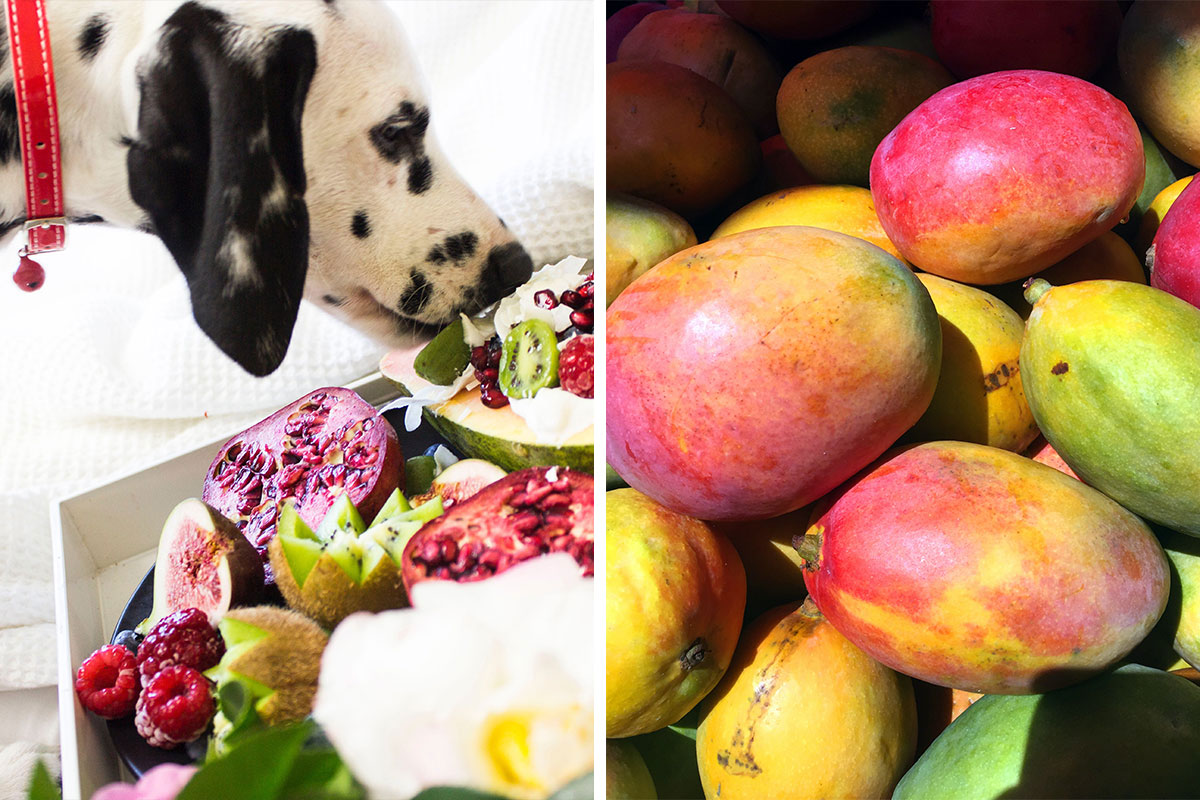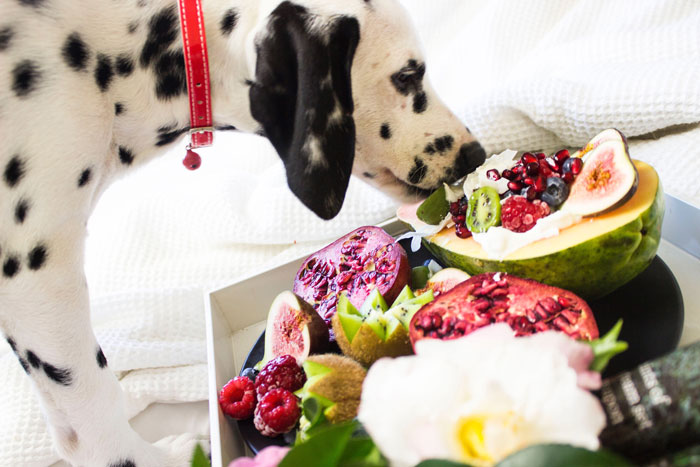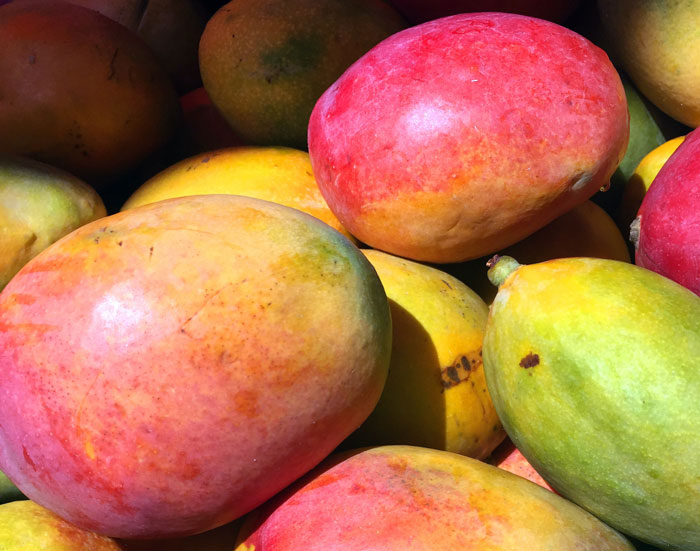When it comes to dogs and mangoes, it’s essential to know the facts before offering mango fruit as a treat. Mangoes can provide vitamins and fiber that might be good for dogs, but they also come with potential risks. While the soft part of mangoes is generally safe, the skin and pit can cause issues like digestive problems or choking hazards for our furry friends.
- Mango flesh is safe for dogs, but skin and pit pose hazards.
- Mango pits have small amounts of cyanide, risky for dogs.
- Consult vets for dogs with pre-existing health conditions.
Mango pits even contains small amounts of cyanide. This means being cautious about what parts of the fruit dogs eat. By examining the benefits and risks, we’ll uncover whether mangoes fit into a dog’s diet plan. Understanding these aspects will help dog owners make informed choices about whether to share this tropical snack with their four-legged pals.
The information provided herein is for informational purposes only. Please refer to our disclaimer for more details..
Is mango toxic to dogs?
Image credits: Havapoo
Mango itself isn’t inherently toxic to dogs. The ripe flesh of the fruit, when offered in moderation, is generally safe for canine consumption. However, while the soft, juicy part of the mango is okay for dogs to eat, precautions are necessary.
The skin and pit of the mango pose potential hazards. The skin can be difficult to digest and might cause gastrointestinal discomfort or get stuck causing obstipation, while the pit also contains small amounts of cyanide, which could be harmful if ingested in large quantities.
To ensure safety, it’s essential to remove the tough skin and pit before offering mango to dogs. Check with your veterinarian before introducing mangoes or any new food into a dog’s diet is advisable to understand potential risks and ensure the dog’s well-being.
How much mango is good for dogs?
The amount of mango that’s safe for dogs and puppies depends on various factors such as the dog’s size, overall health, and individual tolerance to new foods.
Mangoes are generally a safe for dogs to eat. When introducing mango to your dog’s diet for the first time, start with a small portion to observe how your dog reacts. This initial introduction allows you to monitor for any adverse reactions or sensitivities to the fruit.
Moderation is crucial. The general recommendation is to offer a few small slices or cubes as an occasional treat rather than a regular part of their diet. This helps prevent potential digestive upset due to the fruit’s natural sugars and fiber content.
Portion Sizes by Dog Size: Adjust the portion size based on your dog’s weight:
Extra-small dogs (less than 10kg): Offer a small piece of mango, approximately the size of a single slice.
Smaller dogs (10 – 14 kg): Two to three small pieces of mango, equivalent to a few slices.
Medium dogs (15 – 19 kg): Four to five small pieces, proportionate to their size.
Large dogs (20 kg and above): A handful of small mango pieces, depending on their weight and size to ensure it’s safe and healthy.
You can get creative with feeding mango to your pup. Try dehydrated mango for a chewy, longer-lasting treat that’s ideal for training sessions, or freeze strips of mango in an ice cube tray to create refreshing, hydrating popsicles for hot days.
Incorporate ripe mango as part of stuffed toys like Kong, mixing it with dog-friendly ingredients such as peanut butter (without Xylitol) or including it in homemade dog treats.
Dried mango, as well as fresh, is loaded with beta-carotene and vitamins C, B6 and A. Ensure you peel the mango and remove the pit. It’s best to cut the fruit and then share a small piece of this sweet fruit with your dog to enjoy as an occasional snack.
After giving your dog mango, observe for any adverse reactions like stomach upset, diarrhea, or changes in behavior. If you notice any negative responses, reduce the portion size or avoid feeding mango altogether.
If your dog has pre-existing health conditions, dietary restrictions, or if you’re unsure about portion sizes, consult with your veterinarian. They can offer personalized guidance on how much mango is safe for your dog based on their specific health and dietary needs.
What happens if my dog eats too much mango?
Image credits: JACQUELINE BRANDWAYN
If a dog consumes excessive amounts of this tropical fruit, it can lead to various health issues due to the fruit’s high in sugar and fiber content. Some potential problems include:
1. Digestive Upset
Excessive mango consumption in dogs can cause upset stomach, leading to symptoms like diarrhea, vomiting, or abdominal discomfort. The high fiber content in mangoes, especially if a dog isn’t accustomed to it, might lead to digestive disturbances, while the tough mango skin could cause irritation or cause an intestinal blockage.
2. Weight Gain
Mangoes contain natural sugars, and overindulgence can lead to increased calorie intake, potentially causing weight gain in dogs. Regularly consuming high-sugar fruit sweet treat might pose a risk, particularly for dogs with weight management concerns.
3. Diabetes Risk
The high sugar content in soft flesh of fruits like mango could impact dogs predisposed to diabetes or those with existing diabetic conditions. Regularly consuming excessive amounts might contribute to insulin resistance or blood sugar spikes, potentially worsening diabetes or increasing the risk of developing this condition in susceptible dogs.
4. Dental Concerns
Mangoes’ natural sugars can promote dental issues in dogs when consumed excessively without proper dental care. Regular indulgence in sugary fruits might contribute to plaque buildup, tooth decay, and gum disease, emphasizing the importance of dental hygiene alongside dietary considerations.
Understanding the benefits and risks, moderation is key when adding mango to dog food. When you feed your dog mango, always remove the skin and pit, observe for adverse reactions, and always consult a vet if unsure. Excessive intake may lead to upset digestive tract, weight gain, diabetes risk, or dental concerns, underscoring the importance of careful moderation and monitoring. Dogs can technically eat much fruit, however if you notice that your pup’s stomach gets upset on any new food, always check with your veterinarian before feeding your dog a piece of thit nutritious fruit.
















-2
0